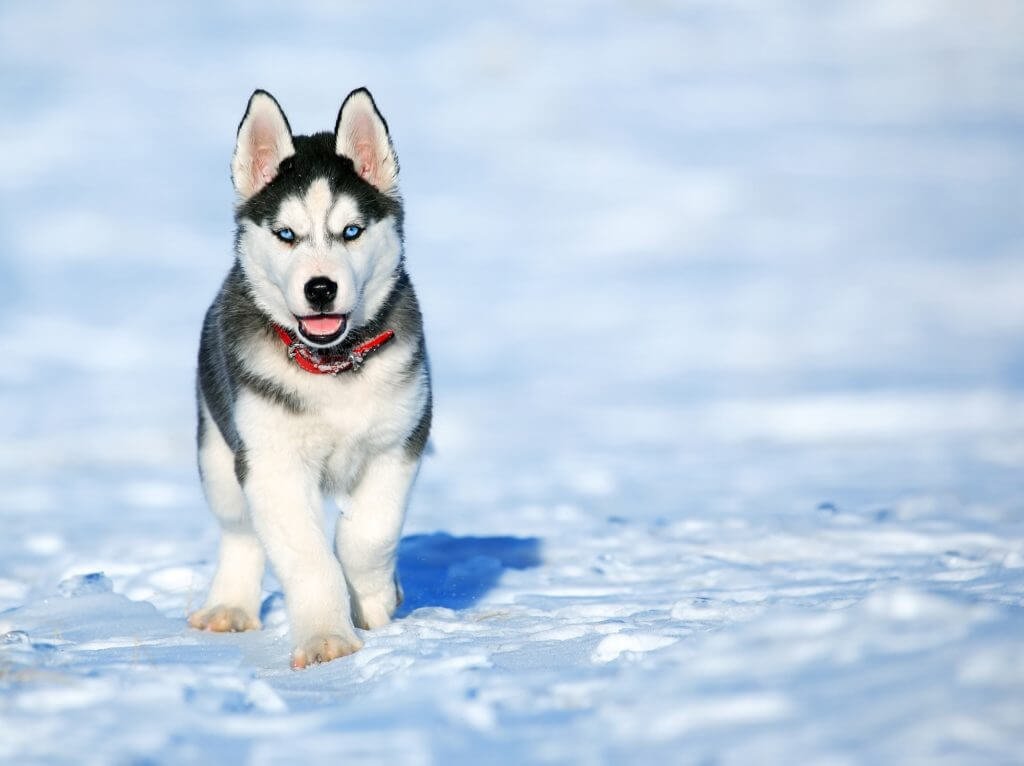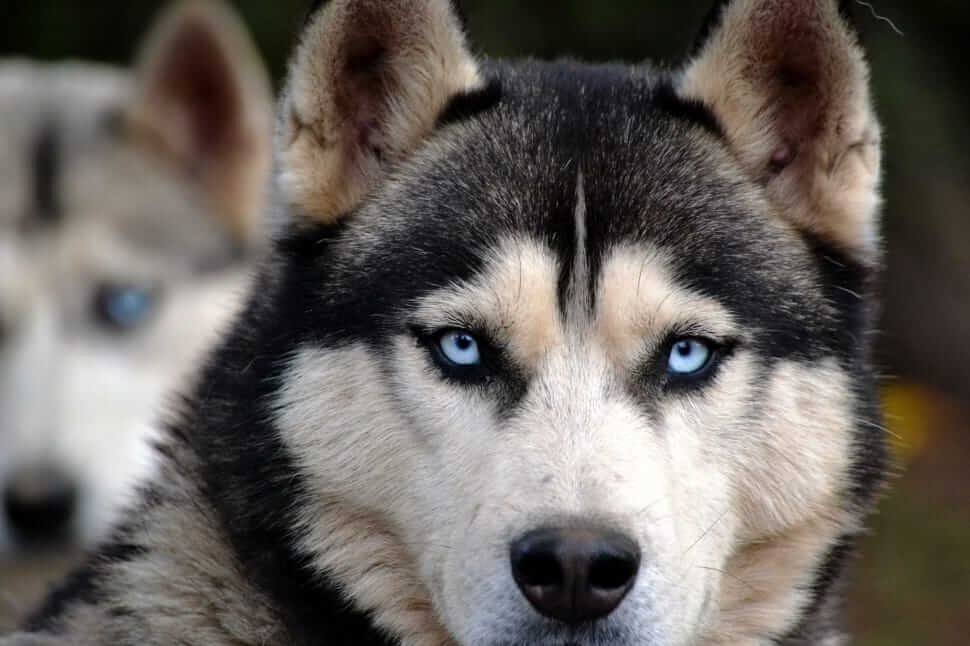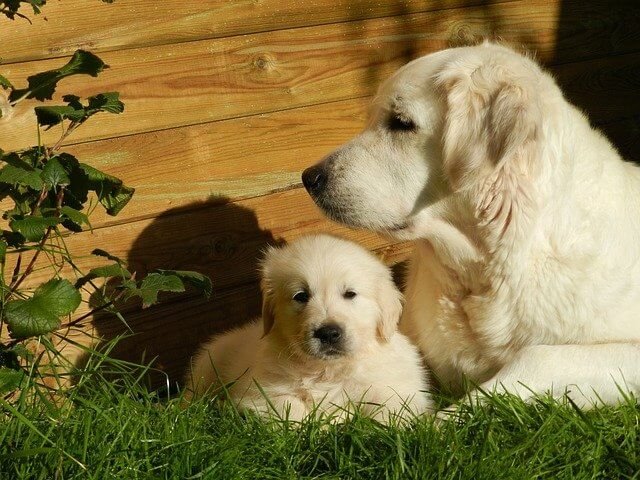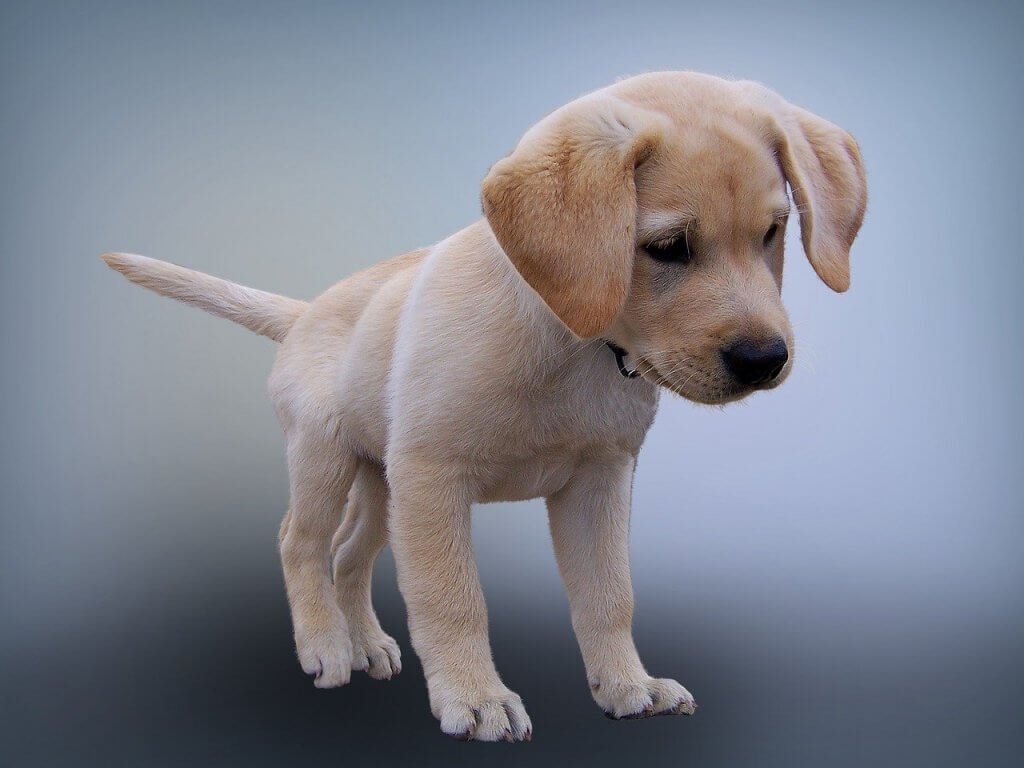Here we are going to discuss Siberian Husky colors & the color of Siberian husky which are most popular all over the world. Siberian husky may be an operating breed of dogs that has medium-sized. This breed dog belongs to a dog genetic family. This dog breed is often acknowledged by some specifications which have a thickly hirsute double coat, erect triangular ears, and distinctive markings and is smaller than a really similar-looking (Alaskan Malamute).
The Siberian Husky belongs to the medium-size working sledge dog family. The breed is characterized by its well-balanced double coat, flat head, round ears, and uniquely distinctive markings, which includes black spots on its head, white-tipped ears, mink-coloured chest and legs, and a white undercoat. While the breed seems very playful and energetic, this is not a breed for individuals who are high-strung or prone to excitement. In fact, the Husky is very calm and easy-going. This breed is one of the most popular in the US and Canada.
Also Read: Siberian Husky Price In India
Table of Contents
Thinking of getting a Siberian Husky?
If you are thinking of getting a Siberian Husky, you must be aware of its markings and the different Siberian colors that it possesses. You must also know the different Siberian husky colors and their meaning. The basic color or coat type of the huskies consists of yellowish to dark brown with varying amounts of black in them. Their double coats are made of soft wool and they can be wrinkled. They have distinctive white markings on their heads, chest, and paws, as well as on their ears.
Also Read:
Golden Retriever Price In India | Labrador Dog Price in India | Siberian Husky Price In India
Rottweiler Price | Beagle Price In India | Great Dane price in India
Lhasa Apso Price in India | Rottweiler vs Pitbull | Pomeranian price
Rampur Greyhound | Chihuahua price in India | Grey Husky
The coat of the Siberian Husky varies in terms of patterns and sizes, as well as in terms of texture.
There are also specific patterns that each of these animals shares. The most popular and typical markings of the Siberian husky colors are the flat, triangular, or “coated” leopard spots, the solid black markings on the head, chest, or paws, and the tan or marbled color on the mink undercoat. Each of these colors has distinct characteristics and unique history. Of all the Siberian husky breeds, these three are the oldest and they still carry with them a strong genetic heritage.
One of the more unusual of the Siberian husky colors is the pure white Husky. These animals have markings that look like a cross between a white-spotted mare and a pure white Husky. They also possess the most distinctive markings and patterns among the pure white huskies and they are surprisingly common despite the fact that they are so rare. While there are several different pure white husky colours, they are the most commonly found.
The most common Siberian husky colors that are most commonly seen are the colors of Alaskan brown and tan.
Alaskan brown is the colour that is common throughout most of North America and Alaskan tan is the colour commonly found in darker coloured Siberians. Other than those two colors, there are also a few other Siberian husky colors such as the very rare and hard to find blue Alaskan pinto markings. Of all the pinto markings present in the Siberian husky family, the blue mark is the most common and yet it is also the least distinct and least pure. It is also the rarest color that is seen within the Siberian husky gene pool.
Another very common and yet unique color is the natural black Siberian husky. Black is a very popular color among many different breeds of dog and it only makes sense that it would be the most common color amongst Siberian huskies as well. There is actually very little black in pure white Siberian huskies so the color could be completely random or it could simply be that the white Siberian husky bloodline is very strong and this colouring is common in only very few dogs. This form of black Siberian husky is also the rarest of all the colors but it is definitely worth taking a look at because of its distinctive color.
The rarest and most expensive of the colors is the chocolate colored Siberian husky.
Chocolate is the rarest of all colors that we see with the huskies but it is also the most luxurious and it is the color that you would expect your princess girl to have when you bring her home for the first time. Chocolate colored Siberian Huskies are the only Huskies that are the color of chocolate and not pure white.
Breeding has been an issue for many years and each breed has a relative coat color that is considered acceptable by the AKC. This has led to different patterns in Huskies being registered and categorized differently. These different patterns in Huskies can have nothing to do with genetics but everything to do with the way the breed was bred. Even though some of the coat colors listed above are considered acceptable, the word pure does stand for a reason and that is when a Husky has no evidence of previous breeding to show that it is purebred.
Black and White Color Of Siberian Husky

The black associate degreed white color Siberian dog has an undercoat with white, grey, beige, or a mix of those 3. the highest coat of the Siberian dog are often far from coal black to a dilution referred to as a “salt and pepper”, this stuff produces the dog look nearly grey, giving the coating depth of color. The black dog has conjointly allowed for red tint and this tint someday provides a brunette look to the dog. This red tint dog is sort of rare, this tint develops once a black dog stays within the sun for an extended amount of your time.
Also Read: Siberian Husky Price
3 Greys the Kids Love Of Siberian Husky Colors
Siberian coats may be a colour coat that will are available in 3 reminder grey: wolf grey, silver, and medium/dark grey. Wolf, grey is an associate degree adaptation of the Dasyprocta aguti sequence, a sequence that provides every individual hair with a variety of colours. This sequence makes a heat shade of grey, with beige, tan, or red behind the ears and on the legs and back. The flat coat is beige. This coat provides a deep colour with uncountable depth. Wolf jury shouldn’t be bemused with the sable-coated colour pattern.
1. Pure White: The “Living Snowdrift”
If any rarest coat colour of the breed Siberian is known aside from pure white colour. Complete restriction of pigment and extension of white over the dog’s entire body provides results of this colour, or lack thence, A white Siberian liver-coloured or black spots. The flat coat is often of silver or white.

Also Read: Siberian Husky Blue Eyes
The White Siberian Husky is a beautiful and majestic dog. It is also one of the most popular dog breeds in the United States. There is some confusion among many Siberian Husky owners as to what the colour of the Siberian Husky really is. All Siberian Huskies are not necessarily white in colour. In fact, they come in all different colours of the spectrum from platinum to chocolate to brown.
Also Read:
Golden Retriever Price In India | Labrador Dog Price in India | Siberian Husky Price In India
Rottweiler Price | Beagle Price In India | Great Dane price in India
Lhasa Apso Price in India | Rottweiler vs Pitbull | Pomeranian price
Rampur Greyhound | Chihuahua price in India | Grey Husky
So exactly what is a siberian husky white color?
Well, it really depends on the markings on the Husky. If you were to look at a purebred Siberian Husky that has a white coat, you would probably notice that there is some degree of white within the coat. While purebred Siberian huskies can have any colour of their choice, sometimes the purebred ones do have some white colouring to them. However, this is not always the case.

When a Siberian Husky is sired by another male and is bred to a female, the dam often carries a lighter coloured sire. In turn, the sire will often carry a white gene. If the dam is a purebred white Husky, she can often have white markings on his skin from the sire. This is something that can be seen when viewing a photograph of purebred Huskies. You can also look at a picture of a Siberian Husky that has some white markings on his body.
Now let’s go over the explanation for what the white markings on a Siberian husky might mean. You see, every time that a Siberian husky is bred the dog develops certain genes that make him a white animal. These are called white gene traits. Most of the time the white colour is caused by the result of a recessive trait.
Let me explain this even better. Let’s say that you have a dog that has a white color because it is a purebred husky and he was bred to a white female dog. Even though he is purebred, if he is bred out to another white female, he would develop a white color because of the white gene he has been carrying. Now, if you were to breed a purebred husky with a non-purebred female husky, you would end up with two different colors. Therefore, a white Husky is not really a white Husky.
What kind of baby do you think you would end up with if you had a purebred Siberian Husky that was bred to be a white husky? I think you would agree that it is a different color than the white color that a Siberian husky is. If you look at an adult Siberian husky and compare it to a purebred white Husky, the markings are quite noticeable. In fact, the white markings on the adult Siberian husky are more apparent than on the purebred white Husky. When a person breeds a purebred Husky to a Siberian husky and then mixes in a white adult husky with the husky, you have a mixed color Siberian Husky.
A purebred Siberian Husky that has some white markings on the body but not on the face and around the ears, will be white color. These purebreds are a different color from the rest of the litter. They also have wrinkled skin, are usually not wrinkly when they are born and have wrinkly hair. Purebred Huskies that have any other color markings on their body, other than the pure white markings, will be a mixed color.
Fact About White Purebred Siberian Husky:
If you are planning on buying a purebred Siberian Husky and the breeder says that he has several white ones in his litter, it means that he is probably one of those breeders that give birth to white Siberian huskies in the winter and keep them in the Siberian husky winter shelter. Then, they go to the breeder’s house in the spring and bring the newborn Siberian huskies. Most likely these dogs have all white markings on their bodies, and most likely they have all black markings on their fur as well. Another way of getting a white Siberian Husky is to buy one from the breeders or pet stores. However, these dogs are all mixed colors and most likely they will be not purebred white Siberian husky. That is why I recommend you go to a reputable breeder that can tell you the history of the dog, and give you a good chance of getting a purebred white Siberian Husky puppy.
2. Agouti (Wolf-Like)- Best of Siberian Husky Colors
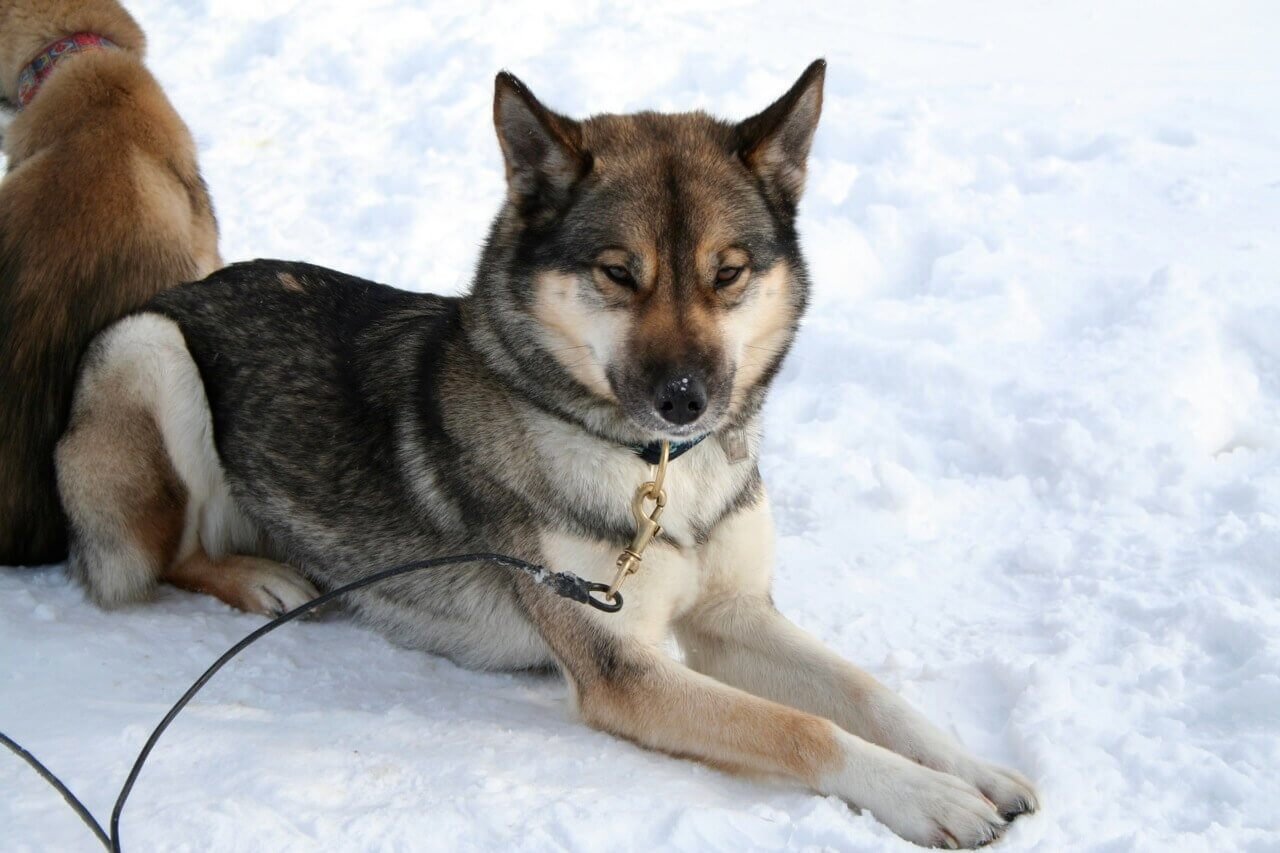
Agouti-coloured Siberian is additionally very rare to availableness, and it’s conjointly referred to as wild colouring, it’s precisely like nearly wolf coloured. Dasyprocta aguti Siberians typically have special masks and markings, and White markings area unit continuously cream. The mask of this dog breed is often dark and extremely serious (“dirty-faced”), and therefore the pigment extended too so much down on the body. No dilution is a gift. The undercoat of Dasyprocta aguti Siberian lavatory is charcoal, and therefore the outer coat is often a mix of black, tan, red, or grey. the same old colouring of the Siberian breed is black on the basis and tip of the hair, with red or tan within the middle. The points area unit black. Siberian Husky Colors Dasyprocta aguti colouring is usually mistaken for sable or wolf grey.
3. Copper or Red Color Of Siberian Husky
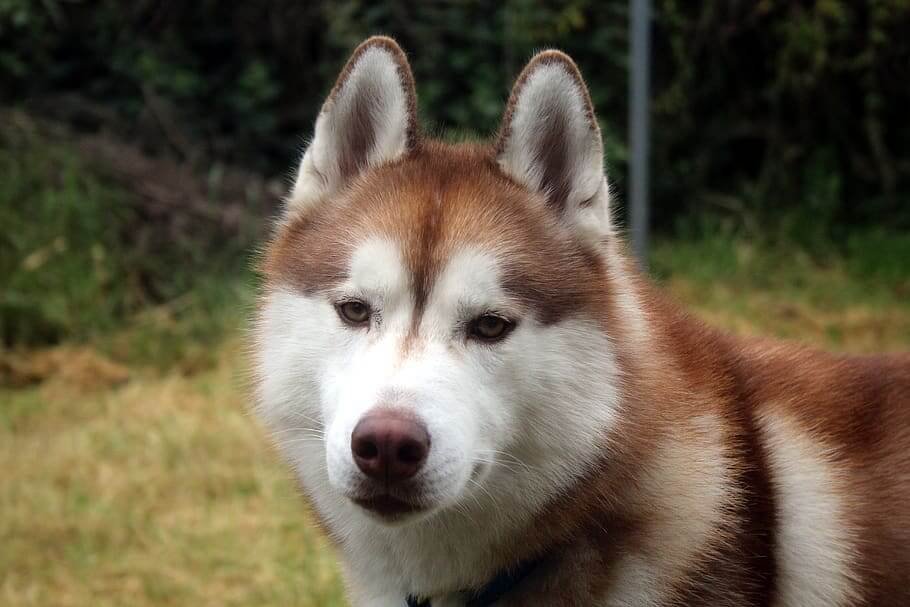
At that place area unit several shades within the coat of red and white that are on the market and maybe seen the Siberian breed.
Red and white colour coat, Siberian breed continuously has liver-coloured points; their undercoat is often copper, lightweight crimson, or cream. they’ll be chocolate-coloured to nearly white.
History of Copper or Red Color Of Siberian Husky
- Siberian Huskies come in a wide variety of colors. Their coat colors vary from pure white to deep brown or black and they may have a darker chocolate-coated or mottled coat. Their coats also come in many different sizes, from small to giant. It’s important to understand the history of the different coat colors. The first Siberian Husky was showy, quite beautiful, but not healthy. The long fur would fall out in clumps and he was prone to disease.
- Some of the genes for this coat condition were obtained from the Russian genes. The Siberian Husky is really a dog with a cross between the Bull and the Bear. The Bull and the Bear are both considered to be close to the Alaskan Malamute. Because of their genetic background, the Alaskan Malamute and the Siberian Husky are close to each other genetically, but still different enough that you can easily tell them apart.
- The copper or Red color husky was first bred in the United States, at least according to the most popular web site on dog breeds. At that time, the only color available was a mocha-colored coat with no black hair. This was the first color variation of the Siberian Husky and was called the “Copper Color” or “Copper Husky“. Many people had the idea that the Copper Husky had been mixed with the American Husky and some even believed it to be a cross between the Afghan and the Alaskan Malamute. So it was nipped in the bud, right in the bud as it were.
- Now the Siberian Husky has become far more popular, especially in Europe. However, since the Alaskan Husky is not actually an Alaskan Malamute, neither is it a Copper Color. I have seen people confuse the names, but they are not the same dog. The Alaskan Husky is an Alaskan Malamute, so in order to confuse anyone, we will use the name “Siberian Husky“, but without the “copper” part.
- The Siberian Husky can be found in a lot of colors, so you should not have any problems finding one to go with your home decoration. Some are even sold with matching leggings. You can buy them in a variety of colors including blue and fawn, chestnut and solid black, chocolate and copper, lilac and gold, red and silver, teal and sand, yellow and peach, or a mix of all of these colors. They are all naturally colored, but some manufacturers color-fy them to make them more appealing to potential buyers. These are usually very dark though, so you might want to consider buying one with a subtle copper tone if you want one of the more attractive colors. There is also a metallic version called De Gold which is slightly brighter than the other colors.
- If you would like to decorate your home in the most popular color, you should probably consider purchasing the De Gold Siberian Husky. This Husky is the official breeding standard of the Netherlands, and the official choice of the Belgian Kanker and European Alaskan Malamute breeders. It is also a favorite choice among Siberian Husky lovers, who like it because it is not as extreme, not as stiff as the worden gemaakt and not as cold as the Maat.
- If you prefer to have something a bit less flashy, but still good looking like the Maat, the worden version has been designed especially for you. The text is still the same, but there are now two different pictures, the first one being the regular big black dog that the worden gemaakt usually has and the second one is a little toy dog that comes in a pink poncho. You can find all of the standard Husky varieties here, including the black and white, along with the original black and tan, platinum blond and gold. You can choose from the standard varieties of these dogs, or you can buy some special limited edition varieties that were only bred in a certain country, such as the British Blue and the American Goldsight.
4. Sable coat Husky
The Sable-coated Siberian Husky Color is another terribly rare coat colour that continuously has black points and black tipping on the fur. The undercoat of this breed includes a shade of red during which one among the 3 listed higher than, however it ne’er beige as in wolf-grey coats.

Also Read: Husky Dog Price
5. Black Color of Siberian Husky
The color of a Siberian Husky is a matter of common knowledge to many dog owners. The color of a Siberian Husky is the result of a gene resulting in a black coat on the adult dog. The Husky is a natural breed and it has always been so. It has even been noted that in the past the color of the Siberian Husky was named after the Siberian Tiger. That is a reference to the natural color of the tiger’s coat. The color history of the Siberian Husky can be traced back about as far as nineteen seventy-two when the first all-black Siberian Husky was bred.

The Siberian Husky is a natural-born hunting dog and was originally bred for that purpose. Their thick coats provide warmth and protection during the cold months. This and the fact that they are very strong and energetic are two important factors in the origin of the black color. It has been noted that in the early part of the twenty-first century a lot of the Huskies that were bred with the idea of being a purebred hunting dog developed black colourations to help hide the lack of white color that many purebred dogs have. As time went on and more Huskies were bred to be sports dogs the black color began to go out of favour.
Tnteresting Facts of Siberian Husky Black color
- Some interesting facts concerning the Siberian Husky’s colour history have surfaced through breeders who wish to improve the popularity of their dog. They are attempting to make the Husky more appealing to women. Many of the breeders are trying to come up with an improved Siberian Husky breed standard by mixing in some darker coloured Huskies into their lines. By crossing some of these Huskies with the Siberian Husky Poodle we get a mix that would be more appealing to women. This seems to be an effort to make the dog more friendly and cuddly.
- While looking at the Siberian Husky’s colour history it appears that all of the different colours occur quite naturally within the litter as the dog evolved over time. The only reason that the black colour has become so prominent is because of how the darker colour has been allowed to dominate in the past. While this is one of the reasons that the Siberian Husky is so popular today the black colour is something that was allowed to happen over time. Even though the Siberian Husky is a widely bred dog and one that is very popular the popularity of the black colour is not something that is allowed to happen today.
The color history of the Black Siberian Husky
- The colour history of the Black Siberian Husky can actually be traced back to when the dog was first bred in the Russian Federation. At that time the Husky was originally bred to be a working dog for farmers. It is quite possible that the darker colour is a result of how the Husky was bred as a worker as it could really stand quite a bit of work. Even though the breed standard did not change the Husky still developed black coats due to the fact that it was bred to do just that.
- Actually, two colours were allowed to occur in the breeding of the dog. These colours were dark brown and dark black. It is interesting to note that during the 1970s the Russian government began to approve the darker shade of the Husky coat. At that point the color had become so common that it was considered a good color for the breed that breeders started breeding for both the black and the brown coats.
- It should be noted that the darker coat does have some drawbacks. One of those being that it can make the dogs appear smaller. That is not a big problem for the Siberian Husky as they are rather large dogs and are not really used to having a small coat. Another drawback is that due to the fact that the Siberian Husky is a breed that can easily harbor some health problems with the black color making their coat more silvery, it has been found that the coat does in fact lead to an increased chance that the dog might have some form of hyperthyroidism.
- The Siberian Husky still retains the black color as part of its traditional coat. The modern version only changes slightly the color to silver. This silver coat is not usually deep or lustrous like the original coat was but it does feel warm and is nice and fluffy and this has contributed to the increasing popularity of the dog. There are many versions of the Siberian Husky now but the two most common are the Western and the Siberian Husky. Both come in different varieties and have their own distinctive personalities. Some have even developed quite a few breeds as different regions of Russia had different types of Huskies who moved into the areas and bred.
6. Pinto Pattern : Siberian Husky Color
Pinto isn’t a colour rather it’s a pattern. Siberian Equus caballus are often of the higher than colour alternative except for white. It causes associate degree far more than white and it’s typically over the shoulders and front legs.
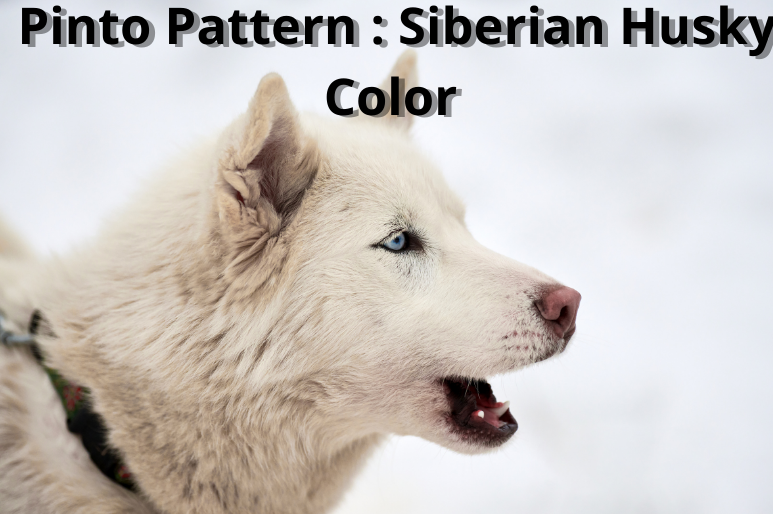
7. Piebald Pattern: Paint the city
The multicoloured pattern is additionally quite rare in Siberian Husky Colors. White is in far more than a half-hour, this is often really jerky the colouration of the Siberian, That giving the Siberian spots and distinctive setting.
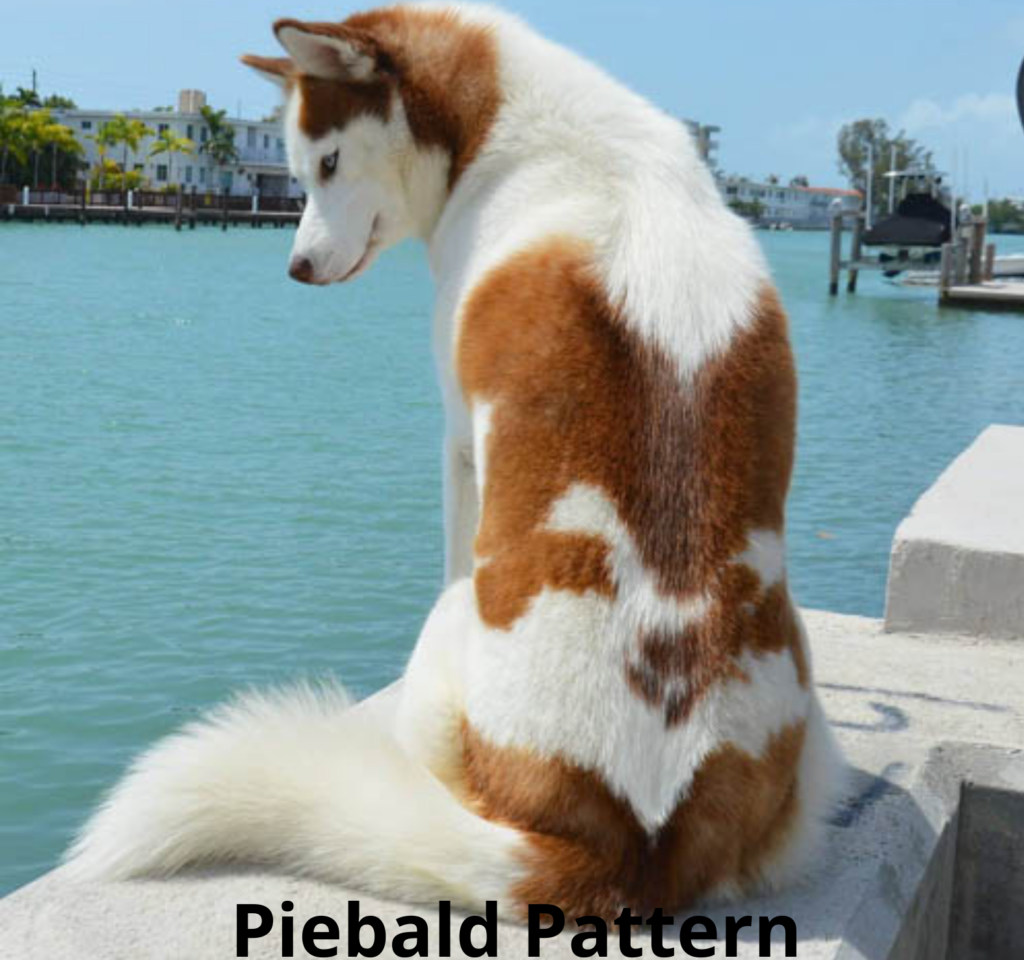
Useful Links:
Lightning Cat | Dog and Cat Hospital | How long do Pet Turtles live? | Why my dog is not eating food?
More Articles:


